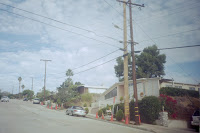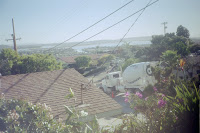Here are some before and after photos; note the dramatic difference!










Day trips with friends.
 It is the home of Doug's sister Laurene and her husband Jim. They moved here from Ventura, CA in 2006, to escape the urban hubbub of southern California. They love the rural setting, and the great fishing opportunities afforded by the nearby Rogue River.
It is the home of Doug's sister Laurene and her husband Jim. They moved here from Ventura, CA in 2006, to escape the urban hubbub of southern California. They love the rural setting, and the great fishing opportunities afforded by the nearby Rogue River."In October 1941, the mayor of Port Orford, Oregon, Gilbert Gable, announced that the Oregon counties of Curry, Josephine, Jackson, and Klamath should join with the California counties of Del Norte, Siskiyou, and Modoc to form a new state, later named Jefferson.[1]
"Gable proposed creating this new state to draw attention to the condition of the state roads along the Oregon-California border, which at the time were oiled dirt roads that became impassable in rain or snow, and handicapped economic development. As local historian Jim Rock explains, "It was more publicity stunt than serious secession movement at that point. After all, under the U.S. Constitution, they had to get the approval of Congress as well as the legislatures of both states.
"Gable's act found sympathy throughout the region, who perceived their state legislatures as indifferent to their needs. Siskiyou County especially embraced the cause: the county seat Yreka became the provisional capital, where in November 1941, county representatives met and selected the name Jefferson for their state, in commemoration of Thomas Jefferson, the nation's third president.
"While inhabitants in Lassen and Shasta counties in northern California flirted with joining the secession movement, only the counties of Siskiyou, Trinity, and Del Norte actually endorsed the idea.
"A naming contest held by the Siskiyou Daily News in November 1941 considered the possibilities for the would be state: Orofino, Bonanza, Discontent, Jefferson, Del Curiskiyou, and Siscurdelmo.
"On November 27, 1941, a group of young men gained national media attention when, brandishing hunting rifles for dramatic effect, they stopped traffic on U.S. Route 99 south of Yreka, and handed out copies of a Proclamation of Independence, stating that the state of Jefferson was in 'patriotic rebellion against the States of California and Oregon' and would continue to 'secede every Thursday until further notice.'
"The secession movement came to an abrupt end, though not before John C. Childs of Yreka was inaugurated as the governor of the State of Jefferson [2]. The first blow was the death of Mayor Gable on December 2, followed five days later by the attack on Pearl Harbor on December 7. Secessionists focused their efforts on the war effort, which crippled the movement."
A few vestiges of these efforts to establish the State of Jefferson exist today.
As described in an April, 2003, American Journalism Review article:
The region retains this identity reinforced by institutions such as Jefferson Public Radio, the headquarters of which is located at the University of Southern Oregon in Ashland, OR. Today, there are 21 FM NPR radio stations in the Jefferson Public Radio network, serving the approximate area envisioned in the 1941 version of the State of Jefferson.
Jefferson is commemorated by the State of Jefferson Scenic Byway between Yreka and O'Brien, Oregon, which runs 109 miles along State Route 96 and U.S. Forest Service Primary Route 48. Near the California - Oregon border, a turnout provides scenic views of the Klamath River valley and three informative display signs about the Republic of Jefferson.
Here and there, even along Interstate 5, there is the occasional sign on buildings referring to the State of Jefferson.
Finally, there are several Web sites devoted to Jefferson. The Jefferson, the 51st State site is quite comprehensive and provided much of the source material for the Wikipedia article.
Even now in 2008, there is talk of establishing a State of Jefferson, this time comprising 12 counties from Oregon and California. See San Francisco Chronicle article from October 2008.
The rationale for establishing Jefferson as the 51st state is the same as in 1941: many residents feel that their interests are not well served by the state capitols in Sacramento and Salem. The region is rugged and isolated, and there is much anti-tax sentiment among the residents. Proposals bandied about to pay for infrastructure and public services included imposing royalties on mining and timber interests, and collecting tolls on roads and bridges.
According to the Jefferson Public Radio Web site,
"The State of Jefferson is a natural division, geographically, topographically and emotionally. As one Jeffersonian put it: 'Jefferson is the state that never was and never will be but that has lived in men's minds for a hundred years.' "
 First was Wasco, located at the intersection of CA-SR 43 and 46. Huell Howser of California Gold fame highlighted the 1928 Wasco High School Auditorium, placed on the National Register of Historic Places in 1997. The Renaissance-style building is an architectural jewel that was lovingly restored after a 10-year effort.
First was Wasco, located at the intersection of CA-SR 43 and 46. Huell Howser of California Gold fame highlighted the 1928 Wasco High School Auditorium, placed on the National Register of Historic Places in 1997. The Renaissance-style building is an architectural jewel that was lovingly restored after a 10-year effort. The most iconic attraction at Turtle Bay is the spectacular Sundial Bridge, designed by the famed Spanish architect Santiago Calatrava. This pedestrian-only bridge was completed in 2004 to much acclaim and controversy (the latter over cost). It is actually a working sundial!
The most iconic attraction at Turtle Bay is the spectacular Sundial Bridge, designed by the famed Spanish architect Santiago Calatrava. This pedestrian-only bridge was completed in 2004 to much acclaim and controversy (the latter over cost). It is actually a working sundial!
 Just outside of the small town of Talmage is the City of 10,000 Buddhas. Their Web site indicates that "this is the first large Buddhist monastic community in the United States." The 488-acre campus was formerly the Mendocino State Hospital, which the Dharma Realm Buddhist Association acquired in 1976.
Just outside of the small town of Talmage is the City of 10,000 Buddhas. Their Web site indicates that "this is the first large Buddhist monastic community in the United States." The 488-acre campus was formerly the Mendocino State Hospital, which the Dharma Realm Buddhist Association acquired in 1976. The centerpiece is the Jeweled Hall of 10,000 Buddhas, completed in 1982. We were able to go in and visit its spectacular interior, but no photos could do it justice.
The centerpiece is the Jeweled Hall of 10,000 Buddhas, completed in 1982. We were able to go in and visit its spectacular interior, but no photos could do it justice. We stretched our legs in the small town of Santa Ynez, and enjoyed a picnic on the grounds of the Old Mission Santa Inés.
We stretched our legs in the small town of Santa Ynez, and enjoyed a picnic on the grounds of the Old Mission Santa Inés. This view is of the Santa Ynez River Valley, taken from the grounds of the Mission.
This view is of the Santa Ynez River Valley, taken from the grounds of the Mission.